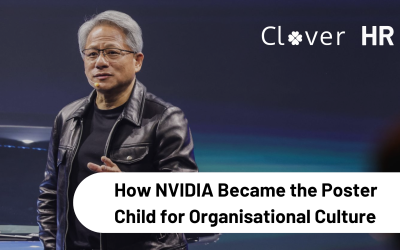Amid a global pandemic, we have seen change after change to the way we live and work, we find ourselves in a constant state of flux within “the new normal” looking to an uncertain future. However, COVID-19 has shown us the importance of flexibility, reactivity and adaptability- things many of us as individuals and businesses pride ourselves on. With a changing labour market and rising unemployment, being agile is crucial, particularly within Recruitment.
How have we been affected?
The impacts of COVID-19 are far-reaching and have seen industries crippled, flipping a previously candidate-driven job market on its head. The International Labour Organisation has predicted 300 million jobs will be lost, worldwide, as a result of the pandemic, with 2.7 million workers (81%) of the global workforce being impacted in one way or another by the lockdown measures. Further to this, with increasing redundancies, the closure of small and independent businesses, the level of unemployment, in the UK alone, is forecast to rise to 6.6% by year-end.
Recruiters and companies have already seen and can expect to see a further huge influx in the number of candidates seeking a new role. This translates to a much higher number of applicants for each role, with this being said, it is expected that many of these applicants may be applying from roles that have been made redundant in industries that have been hugely disrupted (e.g. Hospitality) so it is crucial for companies and recruiters alike to look to the transferable skills of their applicants, consider what the individual could bring to the company and whether they could add value and fit in with the culture despite industry or a certain level of experience.
Adapting to create our own ‘new normal’
With local lockdowns coming into force quickly, stricter social distancing guidelines and office workers once again bound to the confines of their homes, the end to end recruitment process is continually evolving from reactive (to the pandemic) to proactive with changes to candidate sourcing, management and onboarding tactics, how could you proactively change your approach to hiring new talent?
Go Digital
With recent the boom in online job platforms and the ability to find your dream job from the palm of your hand from anywhere at any time, digitalising the entire end to end recruitment process is more important than ever.
-
Digital Marketing
More and more companies and recruitment agencies have worked on their digital marketing to attract candidates, moving from adverts on company websites to far-reaching campaigns across multiple sites and in particular social media. To ensure that the right vacancy is reaching the right applicants, looking into the use of clever and strategic analytics across social media, SEO, and the use of sponsored posts (e.g. on LinkedIn) can have a big positive impact.
-
Applicant Tracking platforms
These tools allow a remote recruitment team or HR department to keep track of all applicants and their progress up to date in one place, accessible by all.
-
Video Interviews
Video interviews are great at saving time, adhering to social distancing guidelines and means that you can interview candidates regardless of your or their geography. Video interviews can be either Live (e.g. through zoom or skype), taking the usual interview process virtual or Pre-recorded. For pre-recorded video interviews, employers or recruiters identify several predetermined questions for candidates to answer in an allotted time which is then saved as an individual video, with no interaction between candidate and recruiter. These are particularly useful when there is a larger number of candidates for interviews.
-
Virtual Onboarding
COVID-19 has taken away some of the novelty of a ‘first day at the new job’, for the majority, there is now no need to plan your journey, carefully pick your outfit and groom to within an inch of your life to meet your new colleagues because chances are, you’ll probably be in your pyjama bottoms (!). A real challenge that we face with new team members is integrating them into their teams, settling them into their roles and onboarding them into the company, through a computer screen. Developing an engaging, interactive virtual onboarding platform, including things such as a virtual handbook, fun “did you knows” and videos of “who’s who” can help translate a company culture as well as bring individuals up to speed on policies and procedures.
Agility and Flexibility
-
Remote workforce
In recent years the number of remote workers has risen, with a number of companies who have fully remote workforces. The recent pandemic has transformed most of our businesses into fully remote operations with many seeing a positive impact on productivity as well as some challenges. Having a partially or fully remote workforce allows you to access a much wider candidate pool as it breaks down geographical boundaries. You can reach a more diverse range of people with a wider range of qualifications, skills, and experience to potentially add value to your business.
-
Redeployment of internal skills
Many businesses are having to face the unfortunate reality of making redundancies, with uncertainty in the future many have turned to recruitment freezes. Businesses should take this opportunity to conduct an internal skills matrix to understand where skill and knowledge gaps are within the business (potentially due to job cuts, illness etc), there may be the ability to redeploy talent across the business, based on cross-functional or transferable skills- ensuring business continuity and possibly safeguarding retention. Additionally, businesses should look to offering their current employees the option to opt into part-time working rather than enforcing job cuts.
-
‘Gig’ or temporary workers
Another solution to filling skill and knowledge gaps while contending with budget and time restraints and uncertainty is the hiring of ‘Gig’ or temporary workers. There has been a rise in the number of contractors and Gig workers with many finding the appeal in self-employment. Hiring workers based on a set budget or time can help ensure you maintain crucial areas and continuity of the business but is more cost-efficient and flexible than full-time employees.
-
Recruiting for retention
With the labour market worlds apart from where it was at the beginning of the year, there are now many more candidates for businesses to ‘choose from’. With such a plethora of available talent, businesses should take the opportunity to really understand what is it that they want- what company culture do we have and who would we like to see as a brand ambassador. These questions tend to take recruitment beyond a job description. Focusing on building a workforce that supports your company mission and promotes your objectives is far more effective than ‘hiring to get the job done. This has a huge impact on your retention rates, businesses should be looking to hire someone for a career as opposed to a job and getting the right fit adds value to both the business and individual.
Managing candidates and their experience
COVID-19 has impacted our mental health as a nation, people increasingly stressed and anxious about the risk of redundancy, the impact of unemployment and the disappointment of rejection; companies and recruiters need to take this into consideration when handling candidates- despite the job-driven market, there is always competition for top talent and a poor hiring experience still won’t cut it.
-
Communication and feedback
Make the effort to personalise communications. In a time where many are working to soften the hard-corporate image and bring personality and humanity to their companies, a ‘Dear Applicant’ email shows a lack of care and consideration for candidates. Additionally, after having adapted their CV, written a personalised cover letter, answered the seven 250-word questions on the application form, getting a standard rejection email can be very disheartening. Making the effort to provide feedback or enabling the candidate to obtain feedback helps individuals understand what the decision-making process was and helps them to go forward. Furthermore, once a candidate has secured a job role, their welcome should be exciting- company merchandise or a ‘welcome hamper’ can help someone feel valued and appreciated from the offset.
For more information and support about hybrid recruitment, speak to our specialists today.


